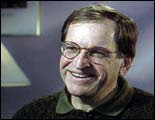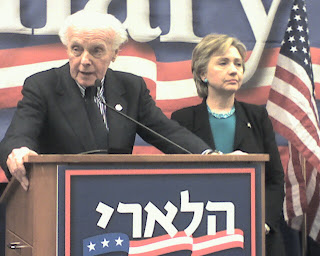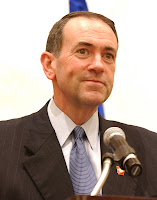In my second year of Rabbinical School at the Jewish Theological Seminary, my seminar leader (a congregational rabbi in New Jersey at the time) predicted the death of the large, high-church American synagogue. The 1,000-plus households synagogue with the vast, ornate sanctuary and a stadium-sized parking lot would soon see its demise he assured me.
I figured he was right. The trend, at least among the younger generation, was toward smaller, more intimate congregations. After all, in the larger cities young Jews were flocking to the do-it-yourself minyans rather than to the large, institutional congregations. At least that was true among Conservative Jews.
However, at the recent Reform Movement‘s Bienniel Convention in San Diego, the focus was on the Mega-Church. The JTA featured this in its article “Reform finds inspiration in mega-church techniques”.
 I first read of the Jewish interest in the mega-church philosophy back in 2006 when the Jewish Journal of Los Angeles reported that Pastor Rick Warren (right) spoke at Sinai Temple’s Friday Night Live. Jewschool then reprinted a press release from Jewish Women Watching about Pastor Rick Warren and Synagogue 3000 leader Dr. Ron Wolfson being strange bedfellows. Turns out that when Synagogue 3000 invited Rick Warren (author of “The Purpose Driven Life”) to speak about building a spiritual community, Jewish Women Watching was outraged because of Warren’s conservative views on abortion and homosexuality.
I first read of the Jewish interest in the mega-church philosophy back in 2006 when the Jewish Journal of Los Angeles reported that Pastor Rick Warren (right) spoke at Sinai Temple’s Friday Night Live. Jewschool then reprinted a press release from Jewish Women Watching about Pastor Rick Warren and Synagogue 3000 leader Dr. Ron Wolfson being strange bedfellows. Turns out that when Synagogue 3000 invited Rick Warren (author of “The Purpose Driven Life”) to speak about building a spiritual community, Jewish Women Watching was outraged because of Warren’s conservative views on abortion and homosexuality.
In November, the New York Times picked up on Synagogue 3000’s analysis of Rick Warren’s Saddleback Church with Samuel Freedman’s article “An Unlikely Megachurch Lesson”. Freedman writes:
One Sunday morning in 1995, Ron Wolfson and Rabbi Lawrence Hoffman braked to a halt in an oddly enlightening traffic jam. The line of cars was creeping toward Saddleback Church in Southern California, whose services were drawing thousands of worshipers. As two Jews, Mr. Wolfson and Rabbi Hoffman had crossed the sectarian divide to try to figure out how and why.
As they inched down the road, they spotted a sign marked “For First-Time Visitors.” It directed them to pull into a separate lane and put on emergency blinkers. Bypassing the backup, they soon reached a lot with spaces reserved for newcomers. When Mr. Wolfson and Rabbi Hoffman emerged from their car, an official Saddleback greeter led them into the church.
Those first moments on the perimeter of the church set into motion a dozen years of increasing interaction between a Jewish organization devoted to reinvigorating synagogues and one of the most successful evangelical megachurches in the nation, the Rev. Rick Warren’s Saddleback Church in Lake Forest, Calif.
This has not been a studiously balanced bit of ecumenicism. Synagogue 3000, the group led by Mr. Wolfson, an education professor, and Rabbi Hoffman, a scholar of liturgy, went to the church to figure out what evangelical Christians were doing right that Jews were doing wrong or not at all.
“To put it bluntly,” Mr. Wolfson said, “if there are thousands of people waiting to get in, I want to know what’s going on. I want to know what they’re doing that’s tapping those souls.”
 Now after more than a decade of Ron Wolfson (left) studying Saddleback Church‘s success, the entire Reform Movement is looking to Rick Warren for answers. The JTA reports that at the Bienniel, “the mega-church influence was felt as well during Friday night prayers, where 6,000 worshipers gathered in a cavernous room on the convention center’s ground floor for a choreographed production of sight and sound. Multiple cameras projected the service on several enormous screens suspended over the hall. A live band buoyed a service that was conducted almost entirely in song.”
Now after more than a decade of Ron Wolfson (left) studying Saddleback Church‘s success, the entire Reform Movement is looking to Rick Warren for answers. The JTA reports that at the Bienniel, “the mega-church influence was felt as well during Friday night prayers, where 6,000 worshipers gathered in a cavernous room on the convention center’s ground floor for a choreographed production of sight and sound. Multiple cameras projected the service on several enormous screens suspended over the hall. A live band buoyed a service that was conducted almost entirely in song.”
Rick Warren was a speaker at an evening plenary session at the annual Reform Movement convention. He explained how he grew Saddleback so large that he expects 42,000 worshipers to attend his 14 Christmas services next week. And two years ago he rented out Anaheim Stadium on the occasion of his church’s 25th anniversary so he could speak to his entire congregation at once.
I’m not sure that any baseball stadiums will be holding Kol Nidrei in the near future, but the idea of a mega-shul is intriguing.
(c) Rabbi Jason Miller | http://blog.rabbijason.com | Twitter: @RabbiJason | facebook.com/rabbijasonmiller
Now, the Hartman Institute in Jerusalem has announced that it will open its own rabbinical school at its German Colony location. In a Jerusalem Post article titled “Hartman Institute to ordain women rabbis”, Matthew Wagner writes:






